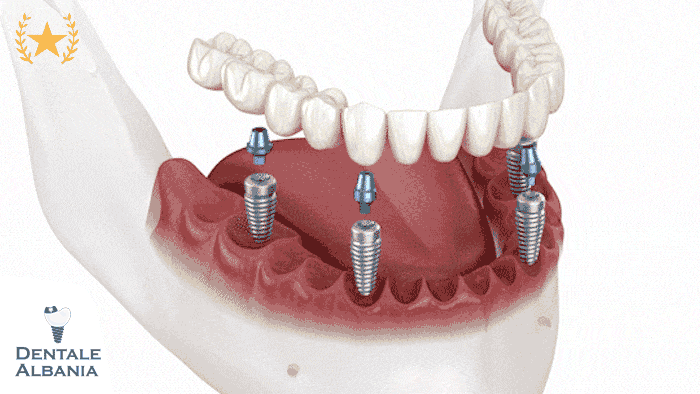Table of Contents
ToggleWhat Are Tooth fillings ? Understanding the Basics

Tooth fillings are a fundamental part of restorative dentistry, designed to repair teeth that have been damaged by decay, fractures, or wear. The goal of a filling is to restore the tooth’s normal function and shape while preventing further decay. Tooth filling are typically used when a cavity has formed in a tooth, which is caused by plaque build-up and bacteria that break down the enamel. Fillings seal off the cavity to protect the tooth and keep bacteria from re-entering, ensuring that the tooth remains functional for everyday use.
What Are Fillings for Teeth?
Fillings serve a crucial function by filling cavities, or holes, caused by tooth decay. When a tooth becomes decayed, bacteria from food and drinks break down the enamel, leading to the formation of a cavity. If left untreated, the cavity can grow and eventually reach the nerve of the tooth, causing pain or infection. A dental filling is placed to “fill” the space left by the decay, effectively stopping the cavity from spreading and preserving the structure of the tooth.
- Fillings restore the function of the tooth by allowing it to withstand pressure during chewing.
- They protect the tooth from further damage by preventing bacteria from entering the cavity.
- Fillings can also help in preserving the natural appearance of the tooth, especially with tooth-colored options like composite fillings.
How Do Fillings Work?
The process of filling a tooth involves several key steps, each designed to ensure that the cavity is fully sealed and that the tooth is restored to its original strength and shape. Here’s a step-by-step breakdown:
- Preparation: The dentist first administers a local anesthetic to numb the area around the affected tooth, ensuring the patient feels no pain during the procedure.
- Decay Removal: The decayed part of the tooth is removed using a dental drill, air abrasion tool, or laser. The dentist will remove all decayed material to ensure that the filling fits securely.
- Cleaning: Once the cavity is cleaned, the dentist may apply an acid gel to prepare the tooth for the filling. This ensures a better bond between the filling material and the tooth.
- Filling Application: The filling material is then placed into the cavity. For composite (tooth-colored) fillings, the dentist will apply the material in layers, curing each layer with a special light to harden it.
- Finishing Touches: Once the filling is in place, the dentist will trim any excess material and polish the tooth to ensure it’s smooth and comfortable. The patient will be asked to bite down to ensure that the filling doesn’t interfere with their bite.
What Types of Fillings Are Available? Exploring Your Options
Dental fillings come in various materials, each offering different benefits, depending on the needs of the patient and the location of the cavity. Choosing the right type of filling is important not only for the function and longevity of the filling but also for aesthetics, especially for visible teeth. Below, we will explore the most common types of dental fillings available, along with their pros and cons.
What Is the Difference Between Gold, Silver, and Composite Fillings?
Dental fillings come in multiple materials, each with its own set of advantages and limitations. Gold, silver amalgam, and composite fillings are the most commonly used. Here’s a breakdown of each:
- Gold Fillings: Gold is considered one of the most durable materials for dental fillings. It can last for 20 years or more with proper care. Gold fillings are ideal for molars or teeth that endure heavy chewing pressure. They offer strength and longevity, but they are also the most expensive option and require multiple visits to the dentist.
- Silver Fillings (Amalgam): Silver fillings are made from a mixture of metals, including silver, tin, copper, and mercury. These fillings are durable, affordable, and long-lasting, often lasting 10 to 15 years. However, their dark color makes them less desirable for fillings in visible areas like the front teeth. Despite this, they remain a popular choice due to their strength and cost-effectiveness.
- Composite Fillings: Composite fillings are made from a plastic resin that can be matched to the natural color of the tooth, making them ideal for fillings in visible areas. While composite fillings blend well with natural teeth and provide a more aesthetic solution, they are generally less durable than gold or silver fillings. They may last between 5 to 10 years, depending on the location and the care taken.
Which Is the Best Type of Filling for Your Teeth?
The best filling material for you depends on several factors, including the location of the cavity, your aesthetic preferences, and your budget. Here’s a guide to choosing the right filling for your needs:
- For Back Teeth: If the cavity is in the back of the mouth (molars), you may want to choose a stronger material like gold or silver amalgam, as these materials can handle the pressure from chewing better.
- For Visible Teeth: If you are concerned about the appearance of the filling, composite or porcelain fillings are ideal as they can be closely matched to your natural tooth color. These materials are perfect for cavities in the front teeth, where aesthetics are more important.
- For Long-Term Durability: If you want a filling that will last a long time, gold fillings are the most durable choice. Though expensive, gold fillings offer unmatched longevity and strength.
- For Budget-Conscious Options: If you’re looking for a more affordable option, silver amalgam fillings offer good durability at a lower cost. They may not look as natural but are effective in preventing further decay.
How Are Fillings Applied? Step-by-Step Process of Dental Fillings
Getting a dental filling is a relatively straightforward procedure that helps restore the function and appearance of a decayed or damaged tooth. Below, we will break down the process step-by-step, so you know exactly what to expect when you visit your dentist for a filling.
What Happens During a Filling Procedure?
When you need a filling, your dentist will first ensure that the area is numb and free of pain. Here’s what to expect during the procedure:
- Anesthesia: The dentist will begin by administering a local anesthetic to numb the affected tooth and the surrounding area. This ensures you are comfortable and pain-free throughout the procedure.
- Decay Removal: Once the area is numb, the dentist will use a drill, laser, or air abrasion to remove the decayed tissue from the tooth. The decayed part of the tooth is cleaned and shaped, making space for the filling.
- Cleaning the Cavity: After removing the decay, the dentist will clean the cavity thoroughly to eliminate any bacteria, debris, or remnants of the decayed tooth. This step is crucial for preventing further decay.
- Filling Placement: Depending on the material, the filling is then placed. If it’s a composite (tooth-colored) filling, the dentist may layer the material, curing each layer with a special light to harden it. For amalgam or gold fillings, the material is packed into the cavity and shaped accordingly.
- Final Shaping and Polishing: After the filling is in place, the dentist will ensure the filling is shaped to match the natural contours of the tooth. The dentist will polish the filling to smooth any rough edges, making sure it fits comfortably within your bite.
How Long Does It Take to Get a Filling?
The duration of a dental filling procedure depends on the size and location of the cavity and the type of filling material used. Here’s a breakdown:
- Simple Fillings: For smaller cavities, the procedure usually takes about 20 to 30 minutes. This is typical for fillings that use composite resins or amalgam.
- Larger Fillings: If the cavity is larger, or if you need more than one filling, the procedure may take 45 minutes to an hour or longer.
- Multiple Visits: If you require a more complex filling, such as an inlay or onlay, it may take two visits to complete. The first visit involves preparing the tooth and taking an impression, while the second visit involves placing the permanent restoration.
What Are the Benefits of Dental Fillings?

Dental fillings offer numerous benefits that go beyond just fixing cavities. These treatments not only restore the function of damaged teeth but also prevent further issues and improve oral health. Let’s dive into why dental fillings are an essential part of maintaining healthy teeth.
How Do Fillings Prevent Further Tooth Decay?
The primary purpose of dental fillings is to restore the structure of a tooth that has been compromised by decay. Here’s how fillings play a crucial role in preventing further damage:
- Seal the Cavity: A dental filling seals the cavity left by decay, preventing bacteria from entering and causing further damage to the tooth. Without a filling, the cavity could continue to grow, leading to more severe tooth damage or infection.
- Protect Against Infection: By filling in the decayed area, the filling helps protect the tooth’s inner structures from bacterial contamination. This is crucial for preventing more serious infections, such as abscesses, which can spread to surrounding teeth or gums.
- Prevent Tooth Loss: Left untreated, cavities can cause significant damage, leading to the loss of the tooth. Dental fillings restore the tooth’s function and help preserve the natural tooth for a longer time, avoiding the need for more invasive procedures like extractions or implants.
- Stop Spread of Decay: Fillings are not only effective at halting decay in the filled tooth but also protect the surrounding teeth from developing cavities. By filling the cavity, the dentist eliminates the potential for the infection to spread.
Can Fillings Help with Sensitivity?
Tooth sensitivity can be a significant issue, especially for individuals with damaged or decayed teeth. Fillings can help alleviate sensitivity caused by enamel loss or damage. Here’s how:
- Sealing Exposed Nerves: When enamel wears away due to decay, the nerves in the tooth can become exposed, causing discomfort, especially when consuming hot, cold, or sweet foods. Dental fillings can seal these exposed nerves, providing relief from discomfort and reducing sensitivity.
- Strengthening the Tooth: Fillings also reinforce the tooth structure, which can help reduce the discomfort that comes from biting or chewing. Once the filling is in place, the tooth becomes more resilient, and the sensitivity may significantly decrease.
- Restoring Normal Function: Fillings restore the tooth to its original shape and function, helping eliminate the issues caused by decay, like sharp edges that may exacerbate sensitivity. As the tooth regains its normal form, sensitivity tends to decrease.
What Are the Risks and Side Effects of Dental Fillings?
While dental fillings are a standard and generally safe procedure, there are some potential risks and side effects to be aware of. Understanding these can help you make an informed decision when considering fillings for your teeth.
Are There Any Risks of Allergic Reactions to Fillings?
One concern that some patients may have is the potential for allergic reactions to the materials used in dental fillings. While allergic reactions are rare, they can occur. Here’s what you need to know:
- Mercury Sensitivity: Silver amalgam fillings contain mercury, which some people may be allergic to. If you have a known sensitivity to mercury or other metals, your dentist may suggest an alternative, such as a composite filling.
- Composite Resin Allergies: Though less common, some individuals may experience an allergic reaction to the composite resin materials used in tooth-colored fillings. This reaction could manifest as a rash, itching, or irritation around the mouth.
- Other Metal Fillings: Fillings made from gold or other alloys could cause allergic reactions in patients with metal sensitivities. If you have a metal allergy, it’s crucial to discuss this with your dentist beforehand so they can choose the best material for your fillings.
- Signs of Allergic Reactions: Symptoms can range from mild irritation to more severe reactions. If you experience persistent discomfort, swelling, or unusual pain after a filling, consult with your dentist to determine if you’re having an allergic reaction.
Can Fillings Cause Sensitivity or Pain?
It’s not uncommon to experience some discomfort after getting a filling. This usually subsides within a few days, but it’s important to understand the reasons why sensitivity or pain might occur:
- Post-Filling Sensitivity: After a filling is placed, it’s normal for the tooth to be sensitive to temperature, pressure, or touch. This is especially true for composite fillings, as the bonding process can temporarily irritate the tooth. Most cases of sensitivity are temporary and improve within a few days.
- Bite Misalignment: If a filling is slightly too high or if the bite feels uneven, it can cause pain when biting down. This is usually easily corrected by your dentist, who can reshape the filling to ensure proper alignment.
- Nerve Sensitivity: If the decay was very deep, close to the nerve of the tooth, there may be lingering pain or sensitivity. In such cases, the tooth may need further treatment, such as a root canal, to address the underlying issue.
- Prolonged Sensitivity: If pain or sensitivity lasts longer than a few weeks or intensifies over time, it may indicate a problem with the filling, such as improper placement, leakage, or an underlying infection. Be sure to contact your dentist if you experience persistent pain.
How Long Do Fillings Last?

One of the most important factors to consider when getting dental fillings is how long they will last. Understanding the longevity of different types of fillings can help you make an informed decision on the best material for your needs.
How Long Do Gold Fillings Last?
Gold fillings are known for their exceptional durability, which is why they are often recommended for back teeth that undergo significant chewing pressure. Here’s what you need to know about the lifespan of gold fillings:
- Longevity: Gold fillings can last anywhere from 10 to 15 years, or even longer with proper care. They are highly resistant to wear and tear, making them ideal for patients who grind their teeth or have strong chewing forces.
- Durability: Gold is biocompatible, meaning it is unlikely to cause irritation to surrounding tissues. Additionally, gold fillings are less prone to expansion or contraction with temperature changes, which helps maintain a stable fit over time.
- Maintenance: Though gold fillings are incredibly durable, regular dental checkups are important to ensure they remain intact and functional. With proper care, gold fillings can often outlast other types of fillings.
Do Composite Fillings Last as Long as Gold or Amalgam?
Composite fillings are a popular choice for their aesthetic benefits, as they can be closely matched to the color of your natural teeth. However, many patients wonder how they compare to more durable options like gold or amalgam fillings in terms of longevity:
- Lifespan of Composite Fillings: Composite fillings generally last 5 to 10 years, depending on the size of the filling, the location, and the patient’s oral hygiene habits. They are more prone to wear and tear compared to gold or amalgam fillings, particularly in areas with heavy chewing pressure.
- Durability: Composite materials are strong but may not be as resilient as gold or amalgam when it comes to withstanding the pressure of biting and chewing. They can chip or wear down faster in back teeth, where the force of chewing is greatest.
- Cost vs. Longevity: While composite fillings may not last as long as gold or amalgam fillings, they are often more affordable and can be a good option for smaller cavities or visible teeth where aesthetics are a priority.
What Happens If a Filling Falls Out or Fails?
Dental fillings play an important role in restoring your tooth’s function, but they aren’t indestructible. If a filling falls out or fails, it can cause further damage to the tooth, leading to pain or additional dental problems. Here’s what you should know about dealing with a failed filling.
What Should You Do If Your Filling Falls Out?
If your dental filling falls out, it’s important to take immediate steps to prevent further damage to the tooth. Here’s what you should do:
- Stay Calm: First, try not to panic. A filling can sometimes fall out due to wear, trauma, or decay around the filling. It’s not unusual for fillings, especially older ones, to come loose over time.
- Protect the Tooth: If the filling has fallen out, the exposed part of your tooth can become sensitive and vulnerable to bacteria. You can cover the exposed area with sugar-free gum or temporary dental filling material from the pharmacy until you can see your dentist.
- Avoid Eating on That Side: To prevent further damage or irritation to the exposed tooth, avoid chewing or biting down on that side of your mouth. Stick to soft foods until you can visit your dentist.
- Make an Appointment: As soon as possible, make an appointment with your dentist. A failed filling can lead to new decay, infection, or tooth fracture. Your dentist will examine the tooth and may be able to replace the filling or recommend a different treatment.
Can You Replace a Filling Yourself?
It can be tempting to try and replace a filling yourself, but it’s important to understand why this is never a good idea:
- Risk of Infection: Without the proper tools, you can’t sterilize the area effectively. Attempting to replace a filling yourself increases the risk of bacteria entering the tooth, potentially causing an infection.
- Inaccurate Fit: Even if you manage to replace the filling, it’s unlikely to have the proper fit or seal. This can lead to future complications, such as leakage, further decay, or sensitivity.
- Professional Care is Essential: Always consult a dentist if your filling falls out. Your dentist can replace the filling properly, ensuring that it fits and seals the cavity effectively.
- Temporary Solutions: In cases where you can’t get an immediate appointment, temporary dental filling kits can help protect the exposed tooth until you get professional care.
How Much Do Dental Fillings Cost?

The cost of dental fillings can vary depending on several factors, such as the type of material used, the size of the cavity, and the geographic location of your dentist. Understanding how much dental fillings cost and the factors that influence pricing can help you make an informed decision about your dental care.
How Much Do Silver Amalgam Fillings Cost?
Silver amalgam fillings, which have been in use for over 150 years, are one of the most common and affordable options for dental fillings. These fillings are made from a mixture of metals, including silver, tin, copper, and mercury. They are durable and typically used for filling cavities in the back teeth, where the filling is less visible.
- Average Cost: The cost for silver amalgam fillings generally ranges between $50 and $150 per tooth, depending on the size and location of the cavity.
- Factors That Affect Cost: The cost of silver amalgam fillings can vary based on geographic location, the dentist’s experience, and the complexity of the procedure. Some dental insurance plans may cover a portion of the cost for these fillings.
- Pros and Cons: While amalgam fillings are durable and affordable, their silver color makes them less aesthetically pleasing, especially for fillings in visible areas like the front teeth. If appearance is a priority, patients may opt for tooth-colored fillings instead.
Are Tooth-Colored Fillings More Expensive Than Amalgam?
Tooth-colored composite fillings are made from a mixture of resin and glass or ceramic particles. These fillings are popular for those who want a more natural-looking result because they match the color of your teeth. However, tooth-colored fillings tend to be more expensive than traditional silver amalgam fillings.
- Average Cost: The cost of composite fillings generally ranges between $90 and $250 per tooth, depending on the size and location of the cavity.
- Factors That Affect Cost: The price of composite fillings can vary based on the size of the cavity, the material used, and whether the filling is placed on a front or back tooth. Composite fillings typically cost more than amalgam fillings because they require more time and expertise to apply. Composite fillings also require a curing light to harden the material, adding to the procedure’s cost.
- Pros and Cons: Composite fillings are ideal for visible areas because they blend well with natural tooth color. However, they may wear down quicker than amalgam fillings, especially in large cavities or when subjected to heavy biting pressure.
Frequently Asked Questions About Dental Fillings
In this section, we’ll address some of the most common questions patients have about dental fillings. Whether you’re curious about materials, procedures, or maintenance, these FAQs will provide helpful insights.
What Are the Most Common Types of Dental Fillings?
The most commonly used materials for dental fillings include:
- Amalgam Fillings: Silver-colored fillings that are durable and long-lasting. Ideal for larger cavities in the back teeth.
- Composite Fillings: Tooth-colored fillings that blend with your natural teeth. They are used primarily for visible cavities.
- Porcelain Fillings: Known for their durability and aesthetic appeal, porcelain fillings are commonly used for larger cavities in the back teeth or for visible fillings.
- Glass Ionomer Fillings: Typically used for small cavities and those below the gumline, they release fluoride to help prevent further decay.
- Gold Fillings: Extremely durable and long-lasting, gold fillings are a premium option that requires a more intricate procedure.
Are Fillings Necessary for All Cavities?
Not all cavities require fillings. In some cases, smaller cavities may not need immediate treatment, and your dentist may monitor the tooth over time. However, fillings are typically necessary when:
- Cavities are too large: If the cavity has progressed significantly and reached deeper layers of the tooth, a filling is needed to restore its function.
- Risk of infection: When tooth decay threatens to spread and infect the nerve, a filling prevents further damage and infection.
- Tooth damage: If the tooth has been cracked or broken, a filling is often needed to restore its strength and prevent further issues.
If the cavity is in its early stages, your dentist may recommend fluoride treatment or monitoring the tooth rather than immediately opting for a filling.









